Could long-acting injectable cabotegravir and rilpivirine be self-administered?

These results were presented to the 24th International AIDS Conference (AIDS 2022), which was held in Montreal, Canada, and virtually last week.
In Europe, the brand name for injectable cabotegravir is Vocabria, while the brand name for injectable rilpivirine is Rekambys. In North America and Australia, the two drugs are packaged together, with the brand name of Cabenuva.
Injectable cabotegravir plus rilpivirine is the first complete antiretroviral regimen that does not require daily pills. Currently, it involves two separate injections in the buttocks administered by a healthcare provider, requiring regular clinic visits.
The first study evaluated the pharmacokinetics and tolerability of administering standard doses of cabotegravir and rilpivirine in the outer side of the thigh, which could make self-administration possible. After a lead-in period on oral medication, 15 people received a 600mg dose of cabotegravir and a 900mg dose of rilpivirine every second month.
After thigh injections, the participants had drug concentrations well above active levels and within the range seen with buttocks injections. Adverse events were common, most often injection-site reactions such as pain, swelling, hardness or redness.
The second study evaluated the safety, tolerability and pharmacokinetics of a high-concentration formulation of cabotegravir. The experimental formulation is 400mg/ml, twice as much active drug per volume as the current formulation. It was developed to support less frequent dosing or potential self-administration via subcutaneous (under the skin) or thigh injections.
There were 88 participants in the study. After an oral lead-in period, four groups received two once-monthly injections containing various doses (200-600mg) of the 400mg/ml formulation administered either as an intramuscular injection in the buttocks or thigh or as a subcutaneous injection in the abdomen. A fifth group received a single larger dose (800mg) in the buttocks to explore the potential for administration once every three months.
The higher-concentration formulation was absorbed faster, resulting in a shorter half-life. Administration every four weeks resulted in plasma drug concentrations within the range seen with the standard formulation, but longer dose intervals were predicted to require a high dose volume the researchers deemed “impractical”.
Participants in this study also experienced injection-site reactions such as pain and swelling, but most considered it acceptable.
These studies could help pave the way for self-administration of cabotegravir plus rilpivirine for HIV treatment or cabotegravir alone for PrEP, which could make long-acting HIV treatment and injectable PrEP a more attractive option.
People with HIV still at higher risk of death from COVID-19 in Omicron wave
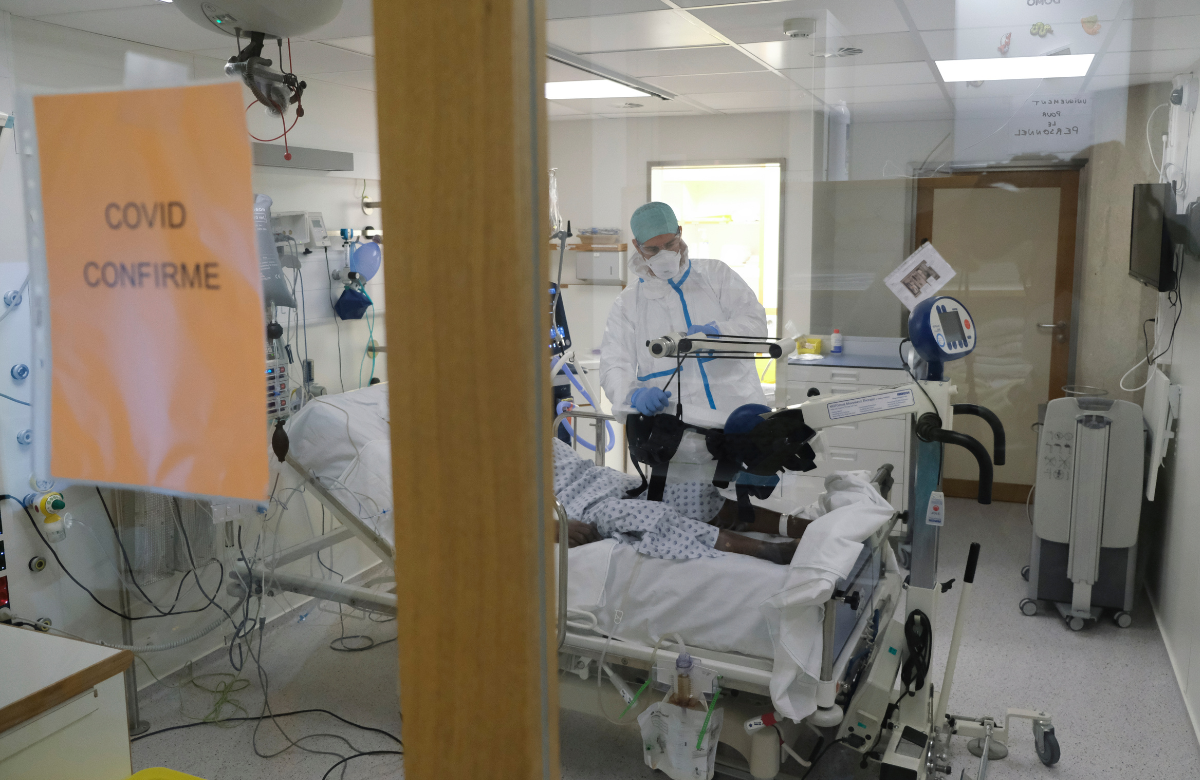
Last year, the same team presented results of a global analysis, showing that people with HIV were more likely to be admitted to hospital with COVID-19 and 30% more likely to die after admission.
The updated analysis includes data up to May 2022. Ninety-six per cent of the data relating to people with HIV came from Africa, predominantly from South Africa.
The new analysis found people with HIV had a 51% increased risk of dying after admission to hospital with COVID-19, compared to HIV-negative people.
With the exception of tuberculosis, which was much less common in HIV-negative people, the prevalence of underlying conditions was similar in the two groups.
Having a CD4 count below 200 and a viral load above 1000 doubled the risk of dying after admission to hospital when compared to HIV-negative people. A CD4 count above 200 and a suppressed viral load was associated with a 12% increase.
In 2020, during the Alpha and Beta variant waves of the pandemic, 24% of people with HIV and 21% of HIV-negative people died after hospitalisation with COVID-19. Rates were similar in 2021, but they diverged in 2022 as Omicron replaced previous variants. The death rate after hospitalisation fell to 8% in the year to date in HIV-negative people, but remains close to 20% in people with HIV.
Dr Silvia Bertagnolio of WHO said that the continuing high death rate in people with HIV is likely to reflect low vaccination coverage in South Africa, which contributed most of the data.
She said the study findings emphasise the importance of improving access to vaccination. She also stressed the importance of minimising exposure to COVID-19 among people with HIV, especially people with CD4 counts below 200. A separate study at the conference showed an association between lower CD4 counts and new infection with COVID-19.
Pilot harm reduction programmes in Africa show progress
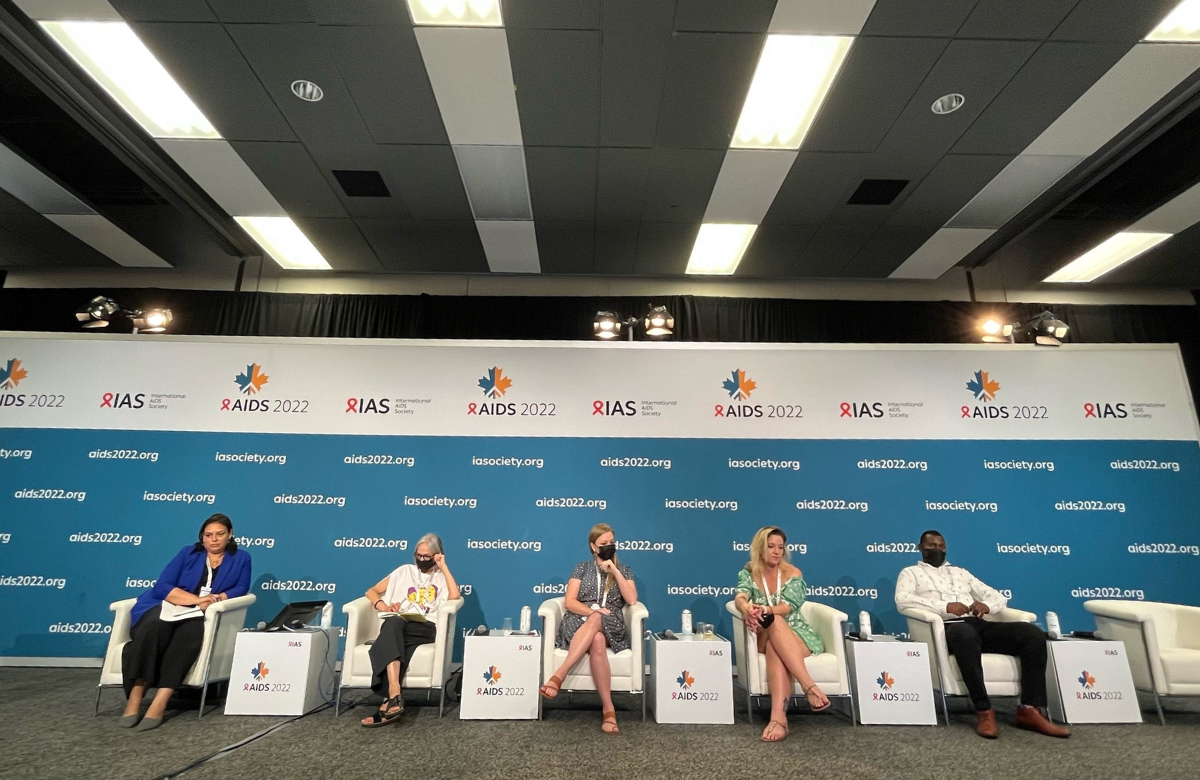
Three pilot harm reduction programmes for people who inject drugs in Africa were presented to AIDS 2022 last week.
People who inject drugs are disproportionately affected by HIV, accounting for 9% of all new HIV infections in the world. In 2020, the UN Office on Drugs and Crime estimated that there are 950,000 people injecting drugs in Africa, among whom the prevalence of HIV and hepatitis C is 11% and 19%, respectively.
The two essential harm reduction services are needle and syringe programmes and opioid substitution therapy (medication to reduce dependency and prevent withdrawal). Services may be provided through drop-in centres, mobile outreach, clinics, peer-led outreach, and community-led services.
Restrictive laws and regulations, along with missing data on prevalence, hinder policy development and service delivery. In 2020, no countries in the region permitted drug possession and only two had anti-discrimination laws for people who use drugs.
Maria Simbine from Mozambique’s Ministry of Health described a pilot harm reduction programme. Whereas HIV prevalence is 13% in the general population in Mozambique, it is 31% among people who inject drugs. The programme provides needles and syringes, naloxone and preventive health services in community settings, with clinic referrals for treatment for opioid dependence. Simbine noted that one of the main challenges people face is criminalisation, as they are arrested and their treatments interrupted.
Mary Mugambi from the Kenyan Ministry of Health gave an overview of one of the continent’s largest programmes for people who inject drugs. In Kenya, people who inject drugs are prioritised as a key population in the national strategy. They have an HIV prevalence of 18.7%, whereas in the general population it is 4.9%. Needle and syringe programmes started in 2010, with medication-assisted treatment following in 2014. Around 10,000 people have enrolled for medication-assisted treatment, with an average retention rate of over 70%.
Dr Chris Akolo of FHI 360 presented findings from a project in Nigeria, where 9% of all new HIV infections are among people who inject drugs. Differentiated services for this population include drop-in centres, community pharmacies and peer navigators. Over two years, 15,816 people were tested for HIV, 1329 were diagnosed with HIV and all started HIV treatment. Around 1302 continued HIV treatment with a 97% viral suppression rate. Another 2841 people who inject drugs started PrEP.
In all the programmes, communities were engaged not only as the users of the services but also as developers and implementers.
Kate Thomson from the Global Fund pointed out that only ten countries in Africa have implemented any needle and syringe programmes and only eight have opioid substitution therapy services. Community leadership and meaningful engagement are essential for increasing harm reduction services and policies.
Virtually no mental health screening and treatment in many HIV clinics

Results were presented to AIDS 2022 from a study which captured information on HIV clinics in Asia, the Caribbean, Latin America, Africa, North America and Australia. Of 223 HIV treatment sites in 41 countries, 67% were in urban settings, and 78% were in low- or middle-income countries.
Urban clinics and clinics in high-income countries were more likely to offer mental health services. There was considerable variation between regions. For example, clinics in Latin America and the Caribbean offered screening for depression (63%) and anxiety (13%), but no site reported screening for PTSD. East Africa screened more for depression (53%) and PTSD (14%) than other African regions, but had the lowest screening for anxiety (7%).
Common mental health problems, including depression, anxiety, and PTSD, are highly prevalent among people living with HIV and associated with poor HIV treatment outcomes. Integrating their screening and treatment into HIV care can improve mental health, HIV treatment outcomes, and quality of life.
Presenting the results, Dr Angela Parcesepe highlighted the lack of screening and treatment for mental health disorders at many rural and paediatric HIV treatment settings, especially in low-income countries, and stressed the need to identify and implement practical and sustainable services.
High cost of second-line treatment in upper-middle income countries

This analysis looked at annual data reported to UNAIDS by low, lower-middle and upper-middle income countries on the volume of drugs procured in 2020 and the price per pack of each drug procured. Drug combinations were identified as first- and second-line treatment regimens based on 2021 World Health Organization treatment guidelines.
Second-line treatments were considerably more costly than first-line treatments, at almost three times the price, per person per year.
The variation in drug pricing between treatment regimens was particularly pronounced in upper-middle income countries, with second-line treatment 8.79 times more expensive than first-line treatment ($1028 vs $117, respectively). Upper-middle income countries with large HIV epidemics include Brazil, Thailand and the Russian Federation.
Latin America is the region worst hit by the high prices of second-line treatment, paying an average of $1494 per person per year for second-line treatment compared to $179 for first-line treatment.
While the disparity is less substantial for low- and lower-middle income countries, they are still paying triple the price, on average, for second-line HIV treatment compared to first-line treatment.
To reduce the costs of second-line treatment, the research team recommends that countries focus on improving treatment adherence to support patients to stay on first-line treatment regimens where it is safe to do so. Governments should also explore mechanisms to increase their purchasing power such as pooled procurement.
Continuity of HIV care for Ukrainian refugees, but longer-term issues must be addressed
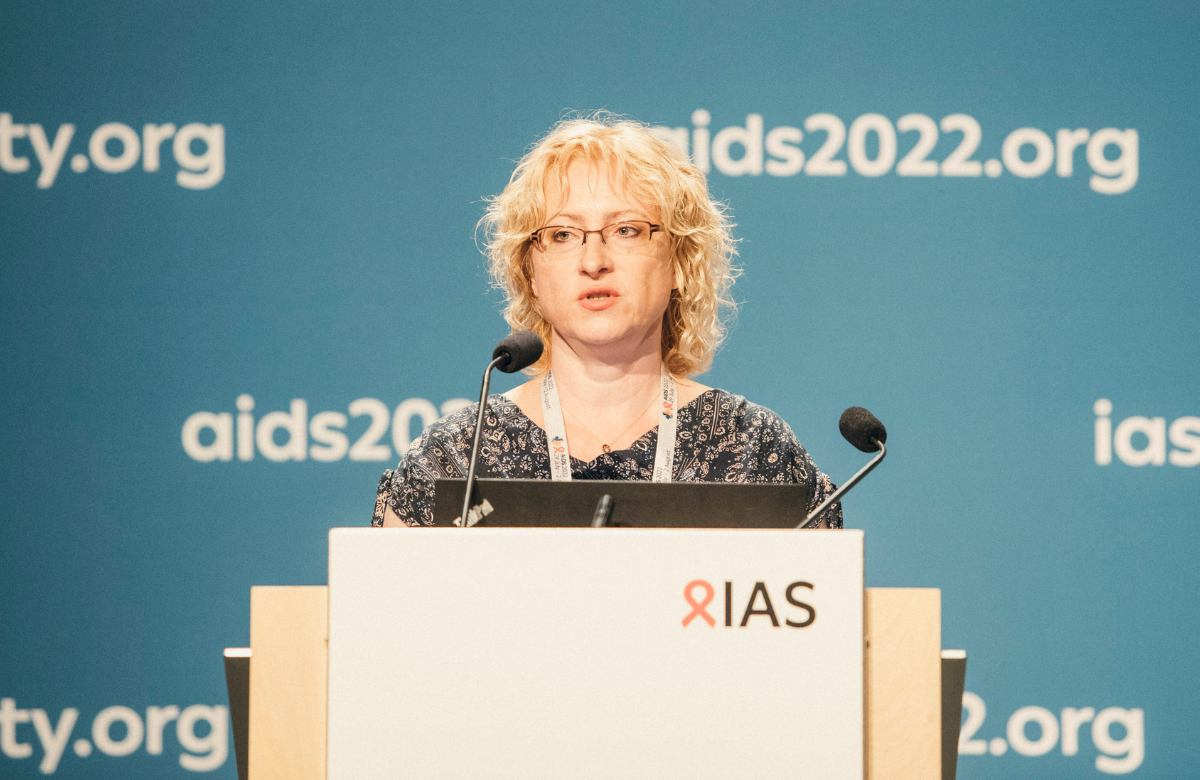
An online survey conducted in March 2022 with HIV and infectious disease experts aimed to understand the war’s impact on the continuum of HIV care for displaced people and on national HIV programmes, especially in central and eastern Europe.
It found that countries receiving Ukrainian refugees implemented prompt measures to provide continuity of HIV care including universal healthcare insurance (73% of respondents), waiving most administrative requirements for accessing HIV treatment (73%), and providing same-day doctor's consultations (55%) and antiretroviral therapy dispensing (86%).
Overall, the data show that removing barriers to care has had a real impact on continuity of HIV treatment amongst refugees from Ukraine – setting out a blueprint for supporting the health of refugees in other settings.
Only a minority of respondents (18%) identified psychological trauma experienced by patients as a barrier for engaging them in HIV care. However, in a media roundtable about the impact of the Russian invasion of Ukraine, worsening mental health was highlighted as an important and growing issue for Ukrainians at home and abroad.
aidsmapLIVE: AIDS 2022 special
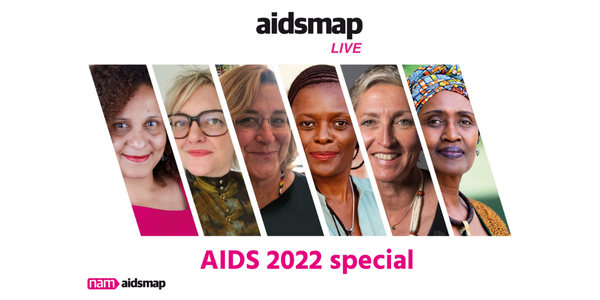
On Monday 8 August, NAM aidsmap broadcast an aidsmapLIVE AIDS 2022 special.
Susan Cole from NAM aidsmap discussed news and research presented at AIDS 2022 with guests: Dr Meg Doherty, Director of Global HIV, Hepatitis and STI Programmes at the World Health Organization; Professor Linda-Gail Bekker, Executive Director of the Desmond Tutu Health Foundation; Dr Laura Waters, Chair of the British HIV Association; Florence Anam, programme manager at the Global Network of People Living with HIV; and Winnie Byanyima, Executive Director of UNAIDS.
Scientific analysis from Clinical Care Options
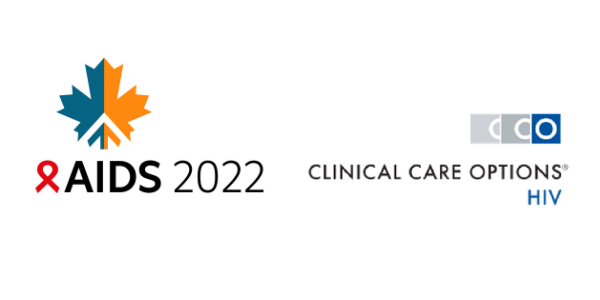
Engage in the scientific analysis of data presented at AIDS 2022 with rapid post-conference webinars by expert faculty, capsule summaries, on-demand webinars, slides and ClinicalThought commentaries provided by Clinical Care Options.
